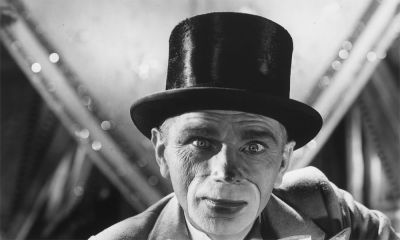
Dopo la caduta. Il cinema e la crisi del 1929
Quando la prima catastrofe dell’economia americana sconvolse il mondo nel 1929, il cinema reagì a quel terremoto in vari modi – e i più immediati non furono necessariamente i più interessanti. Gli anni che seguirono il crollo di Wall Street significarono Grande Depressione, disoccupazione, il baratro tra poveri e ricchi sempre più oscenamente spalancato – un mondo che ballava ai bordi d’un vulcano e la crisi che dilagava, mentre la Seconda guerra mondiale si faceva più vicina. In questi anni appaiono film come Seifenblasen di Slatan Dudow, New Earth di Joris Ivens, storico documentario anni Trenta sulle nuove terre strappate al mare e sulle controverse conseguenze economiche della conquista, Man’s Castle di Frank Borzage, capolavoro di romanticismo disperato all’ombra della crisi, Hard to Handle di Mervin LeRoy, Sonnenstrahl di Paul Fejos, Darò un milione di Mario Camerini, Komödie om Geld di Max Ophuls e lo svedese Petterson och Bendel di Per-Axel Brenner, probabilmente il primo film antisemita europeo. A fare da apripista, il capolavoro di Julien Duvivier David Golder, del 1933, tratto dal romanzo di Irène Némirowsky e interpretato dal grande Harry Baur.
As the Wall Street Crash of 1929 changed the world, cinema registered the earthquake that followed in different ways; some of the most immediate examples were not necessarily the most interesting ones. The aftermath of the Great Depression translated into financial crisis, unemployment, the gap between the poor and the rich growing obscenely wider – a world dancing on the edge of a precipice as the crisis was spreading and the Second World War approaching. This period saw the production of films like Seifenblasen by Slatan Dudow, New Earth by Joris Ivens, a historic 1930s documentary on taking land from the sea and the controversial economic repercussions resulting from it, Man's Castle by Frank Borzage, a masterpiece of the desperate romanticism in the wake of the crisis, Hard to Handle by Marvin LeRoy, Sonnenstrahl by Paul Fejos, Rotaie by Mario Camerini, and Komödie om Geld by Max Ophuls, as well as the Swedish Petterson och Bendel by Per-Axel Brenner, probably the first European anti-Semitic film. Julien Duvivier’s 1933 masterpiece David Golder – adapted from Irène Némirovsky’s novel and with the great Harry Baur – will open the series.










